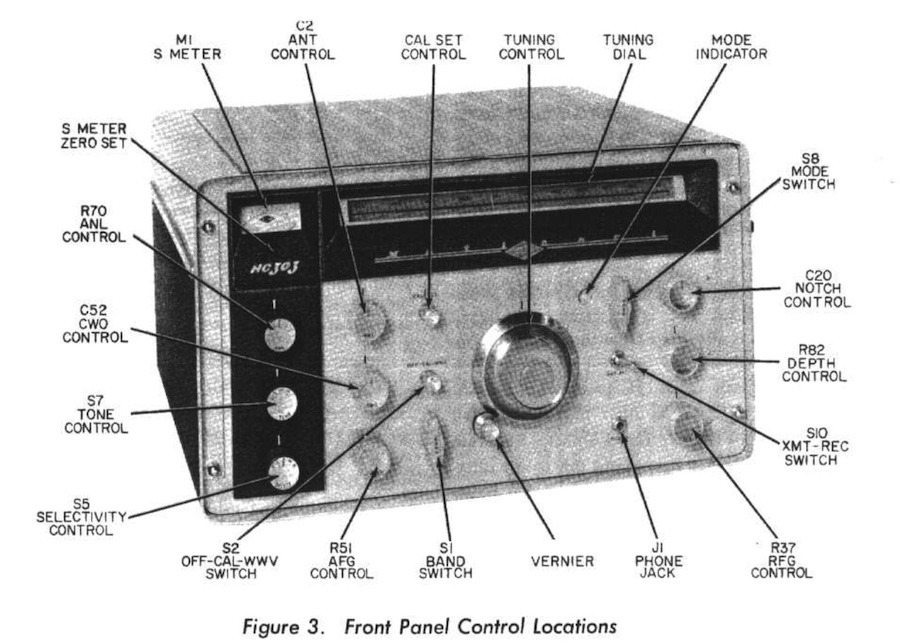Ham Radio
Best Hobby A Young Man In The 1950's Could Have!
My First "Real Receiver"

Prior to this jewels I had S-38 Hallicrafters 6 tube wonders, It would pick up all signals available at the same time and provide and non-understandable mish-mash od morse code, AM voice, Single Side Band and Radio Teletype. It was time to invest!
The Company
The company was incorporated, in 1914, as the "National Toy Company", but by 1916 had included household appliances in their product range. This expansion led to the name change to the "National Company, Inc.". By 1923 the product line included toys, food mixers, and radio components.
It was at this time that two engineers from Harvard University, Fred H. Drake and Glen Browning, approached National to manufacture components to their specifications for a radio receiver of their own design.
By the early 1930s National had established a reputation with the amateur radio community based upon their line of regenerative receivers, including the SW-3 and SW-5.
National HRO receiver, circa 1938
In 1935 National introduced their top-of-the-line HRO receiver. This radio included two RF stages and a crystal filter. The distinctive dial allowed KC (kHz) resetability and was a National trademark into the 1960s. With few changes other than to keep up with changing tube technology, this same basic design survived for over 20 years.
National began providing equipment to the United States and Allied government customers such as the Royal Navy in 1939. After the US declared war in 1941, National was advised by the military to "Start building HROs; we'll tell you when to stop." National began producing for the war effort, and the number of employees went from approximately 200 to about 2500 during the war. The war effort brought increased recognition and profits to National and after the war, in the late 40s, National went public.
I Remember The Advertisements Well
During the period in the 1950s and 60s, National produced a wide range of amateur radio equipment which was advertised extensively in the amateur radio ARRL publication QST.
Usually new equipment was first shown in this publication in order to initiate marketing of a new item. The company would mainly opt for the inside back cover which they believed would gain prominence for their new wares.
In addition, around Christmas time each year National would produce tempting advertisements festooned with holly leaves.
In the late 1950s, National asked the readers of QST what they wanted in a new ham radio receiver, with the result being the National NC-300 (and its successor, the NC-303).
It featured a rare 30–35 MHz input for converters for 50, 144 and 220 MHz use (220 MHz equipment was very rare at the time)
This receiver was made from 1955 - 1958
This is what National said about the receiver: National's famous "Dream Receiver." An extremely sensitive highly stable with exceptional calibration accuracy. Has eight electrical bands, 160 through 10 meters, plus a special 30-35 mc range used as a tunable IF for 6, 2, and 11\4 meters.